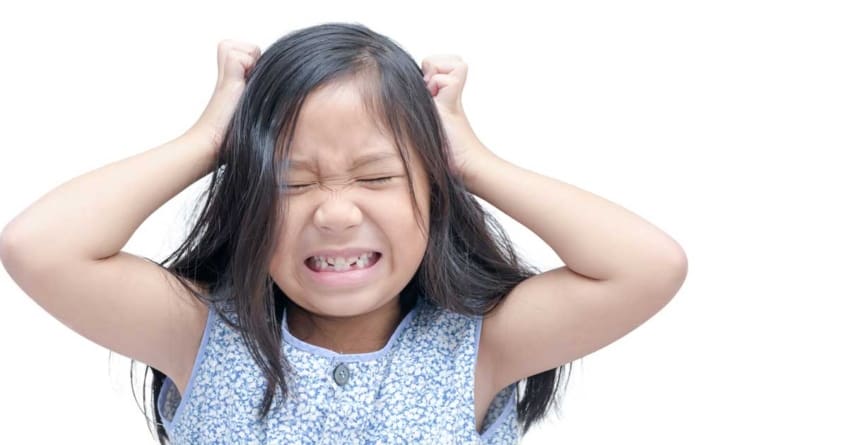
What is head lice?
Head lice are small wingless insects (bugs) that can get on your hair and scalp. Lice are parasites, which means that they feed on very small amounts of your blood. Lice bites may cause constant scratching and lead to skin irritation or even infection.
Symptoms
Because lice move very fast, they’re not always easy to see. Here’s what you can watch for:
- Frequent scratching or itching.
- The feeling something is moving in your hair.
- Small red bumps or sores on the scalp, neck, and shoulders.
- Lice eggs, also called nits, which look like tiny, oval shaped, white, or clear dots. Nits usually stick at an angle (45 degrees) on hair shafts.
If you think someone in your family has head lice, it’s probably best to check everyone in the family. If you’re not sure, your family doctor can help diagnose head lice.
What causes head lice?
Anyone can get head lice, but it’s more common among school-aged children. Head lice spread more easily among children 3 years to 12 years of age because they share their belongings more often than adults and they play closely together.
It’s not true that people get head lice because they’re dirty. Head lice are very contagious. No matter how many times you or your child takes a shower or washes his or her hair, it’s still possible to get head lice from head-to-head contact with someone who is already infested with lice. You can also get head lice if you share hats, towels, pillows, combs, or brushes with someone who has head lice.
How is head lice diagnosed?
In most cases, you should be able to diagnose head lice yourself. Finding a live nymph (young) or adult louse on the scalp or hair is enough for a positive diagnosis of head lice.
If you find only nits (eggs) attached to hair, chances are still fairly strong that there is a lice infestation. However, if the nits are positioned more than ¼ inch from the base of the hair shaft, they most likely are dead and will not hatch. If you see these nits and no live bugs, you no longer have active head lice.
If you can’t find any lice but are still having symptoms, see your doctor for help with the diagnosis.
Can head lice be prevented or avoided?
It may be difficult to prevent head lice from spreading among children, but the following are some steps you can take to help keep lice away:
- Ask your child not to share combs, brushes, or hair decorations.
- Ask your child not to try on hats that belong to other children.
- If your child will be sleeping away from home, be sure to pack his or her own pillow and towels.
Treatment
Head lice can be treated with over-the-counter or prescription medicines. Over-the-counter shampoos and lotions containing pyrethrin (one brand name: Rid) or permethrin (brand name: Nix) are commonly used. Shampoos and lotions that kill head lice contain pesticides and other chemicals. It’s important to talk to your doctor before using these products, especially if you’re pregnant or nursing, or if you have allergies or asthma. It’s also not safe to use products with pesticides on or near your eyes. If you find head lice or nits in eyelashes or brows, talk to your doctor.
If over-the-counter products are not effective, your doctor can prescribe a cream, lotion, or shampoo to treat your head lice. Certain prescription medicines are also safer for women who are pregnant or breastfeeding.
The products that kill head lice don’t usually kill all nits. To reduce the risk of another lice infestation, pick the remaining lice and nits by hand or by using a special comb (one brand name: LiceMeister) to remove them. Comb through all of the hair, one section at a time, every 3 days or more often. Do this for at least 2 weeks or until you stop seeing head lice and nits. A repeat treatment might be needed in 10-14 days.
You should also use hot water to wash any bed linens, towels, and clothing recently worn by the person who had head lice. Vacuum anything that can’t be washed, such as the couch, carpets, your child’s car seat, and any stuffed animals. Because head lice don’t live very long away from the scalp, you don’t need to use lice spray on these items.
Living with head lice
The good news is that you don’t have to live with head lice for long, although it may feel like a long time. It may take a few treatments and a few weeks to get rid of them completely.
Head lice can’t jump or fly. Only the direct contact with an infested person or their contaminated items can spread lice. Encourage your young and school-aged children to take the precautions listed above to avoid future cases of head lice.
Questions to ask your doctor
- What is the best way to get rid of head lice?
- Should I use a special shampoo?
- Will I need a prescription shampoo?
- How did my child get head lice?
- Should I check the rest of my family for head lice?
- Should I get a special comb?
- How long will it take to get rid of the head lice?
- How soon should I repeat the treatment?
- What should I do at home?
- Should I bring my child back for a follow-up visit?
- Could the head lice come back?
![]()
Copyright © American Academy of Family Physicians
This information provides a general overview and may not apply to everyone. Talk to your family doctor to find out if this information applies to you and to get more information on this subject.









